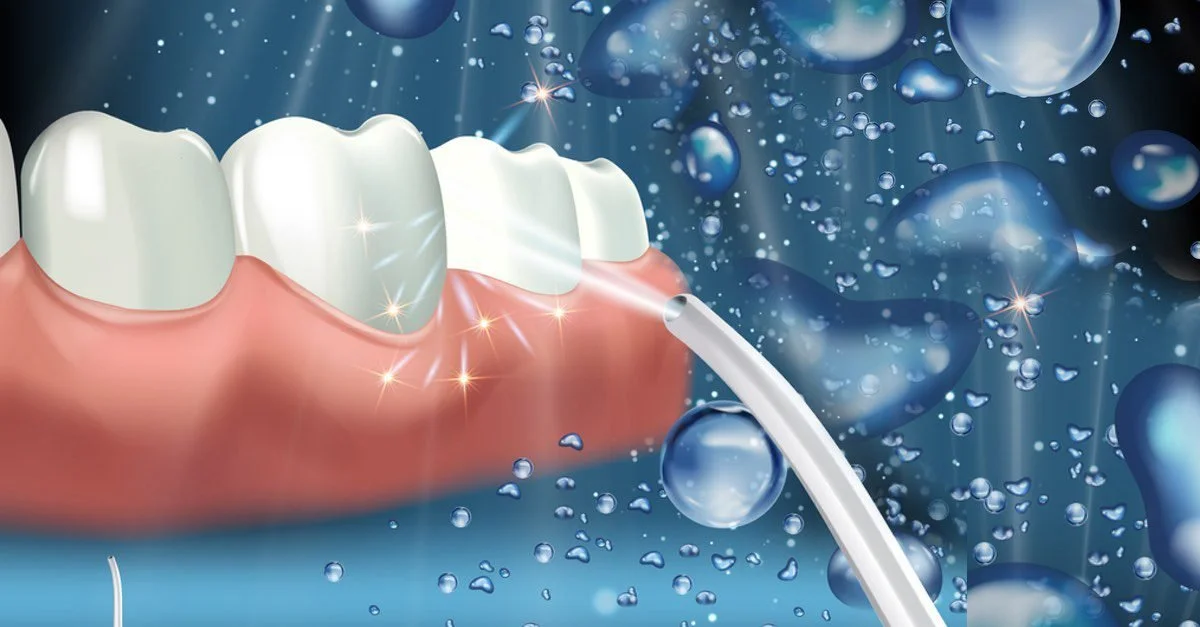Can I Use A Water Flosser Instead?
What better way to start off the new year than with a resolution like flossing?
Sounds easy enough, right? Except that your fingers have turned blue from being strangled by the floss. Or you look down at the pile of discarded floss – and it’s enough to weave into a basket or make a small sweater.
Maybe it’s time to consider a water flosser.
A water flosser is a device with a reservoir for liquid that shoots a small, intense stream of water. It is designed to remove food particles and debris inside the mouth, particularly in between the teeth.
The original water flosser was invented in 1962 as an oral irrigator. Initially founded as the Aqua Tec Corporation, they changed their name to Water Pik. In 1967, the company was acquired by Teledyne Inc. Shortly thereafter, Water Pik became an industry leader in showerhead technology. Today Water Pik is a wholly owned subsidiary of Church & Dwight, who also manufactures Arm & Hammer products, pregnancy tests, and condoms.
Much like Kleenex ® has become synonymous with facial tissues, Waterpik® was known as the gadget that squirted water into your mouth. The connection or claim to flossing was never advertised. It wasn’t until the Waterpik® rebranded itself as a water flosser that its popularity rose.
Today Waterpik (the company) sells over 25 different models of water flossers, ranging in price from $40 to $200. Other companies also make water flossers. A survey of random “best lists,” including WireCutter, Forbes, Good Housekeeping, and CNN, reveals several water flossers that appear across multiple lists.
Waterpik Aquarius Water Flosser for braces
How should you use a water flosser?
The most important thing to keep in mind is to put the nozzle in your mouth prior to turning it on. This prevents water from spraying everywhere. Lean over the sink and have a towel handy.
One distinct advantage of the portable cordless type is that flossing can be done in the shower. That being the case, it would make sense to shower before bedtime so that food particles don’t remain lodged overnight when saliva flow is at its lowest and the potential for dental disease is higher.
As with regular flossing, be systematic in your technique. Start at one side of the mouth and work methodically. Adjust the spray and intensity such that it’s effective without traumatizing the gums.
But is water flossing as effective as using string floss?
Most dentists will tell you that water flossing is not a substitute for dental floss. Some scientific studies support its efficacy while others report its inferiority to dental floss. Regardless of the method, the user’s skill often determines the success of the flossing. Clearly a water flosser is easier to use than string floss.
Water flossing is ideal in certain situations:
Patients with manual dexterity issues
Children or adults with braces
Dementia sufferers
Patients with complex dental work, such as bridges, where teeth are permanently connected
Patients with significant gum disease where bone loss and gum recession have resulted in large spaces between teeth
Cavities commonly develop on tooth surfaces in between the teeth. Further, food debris can harbor harmful bacteria which adversely contributes to bad breath, gum disease, and a host of systemic ailments including heart disease. So even though it’s preferable to clean thoroughly before bedtime, the most important thing is to FLOSS - anytime.






